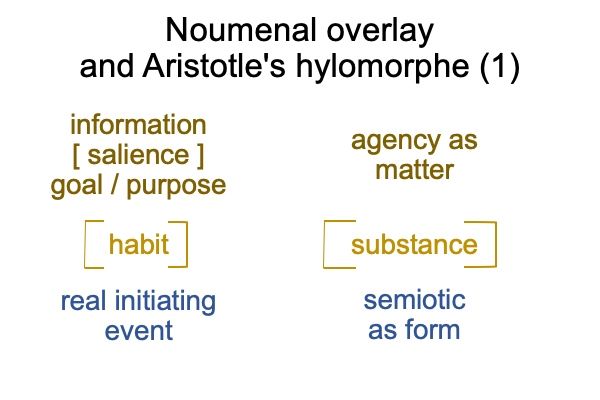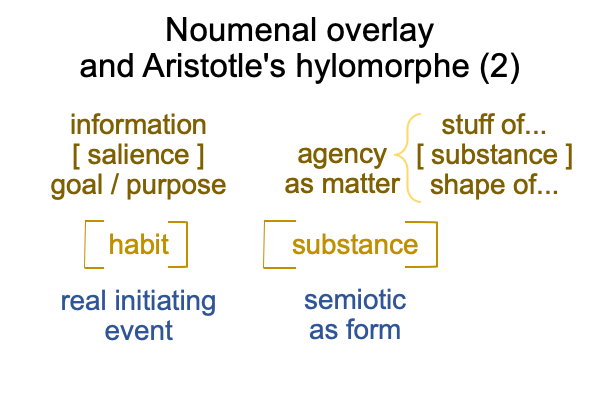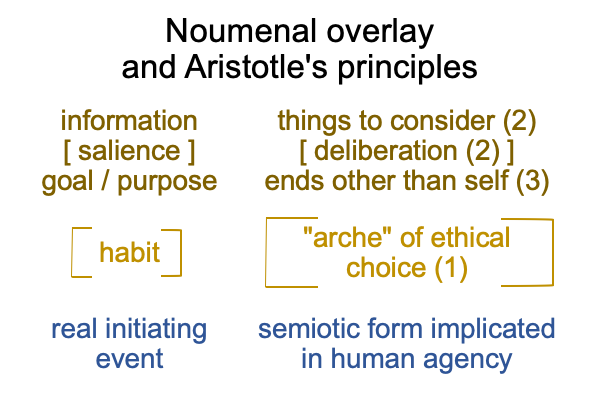0078 Chapter two contains a historical overview that wildly differs from a recent philosophically oriented history of semiotics, John Deely’s book (2001 AD), The Four Ages. Already, in the examination of chapter one, past philosophers have been mentioned, as needed. These philosophers include Charles Peirce (1839-1914), Immanuel Kant (1724-1804) and the mechanical philosophers of the seventeenth century, such as Rene Descartes (1596-1650). Oh, let me not forget Aristotle (384-322 BC).
0079 Aristotle’s philosophy is embedded in Sharov and Tonnessen’s noumenal overlay.
0080 The noumenal overlay has the structure of the initial step in natural philosophy, the recognition that a thing is a dyad consisting of matter [substance] form. In particular, the agent associates to matter. A sign-vehicle, the first element in a sign-relation, associates to form.
One could say, “Agency (matter) takes the shape (form) of the sign-vehicle.” Of course, this statement confounds the sign-vehicle with the sign-relation. But, that is what humans routinely do. A red-octagonal “stop-sign” is not the same as the act of stopping according to a traffic law. Yet, it seems so.
0081 I could say that the sign-vehicle represents a semiotic form that actualizes agency as matter.

Or, I could say that the agency, as matter, substantiates semiosis, as form, for the fundamental dyad.
0082 For the resonant dyad, agency has the same structure as Aristotle’s hylomorphe. Agency may be configured as matter [substantiating] form. The matter-in-matter may be regarded as “the stuff of agency”, while its corresponding form-in-matter may be regarded as “the shape of agency”. The stuff of agency [substantiates] the shape of agency.

0083 The authors recount Aristotle’s three ethical principles of human agency.
One, the agent is the “originating principle” of his actions. In Greek, the term, “originating”, is “arche-“. Carl Jung (1875-1961) bases his psychoanalytical approach on “archetypes”. Archetypes label habitual (some would say “innate”) patterns of human attitudes and behaviors.
Two, the agent deliberates about things within the agent’s own power to accomplish.
Three, the agent aims at ends that are distinct from the agent, himself.
0084 Does S&T’s noumenal overlay resonate with Aristotle’s three principles of human agency?
Here is my guess.

The only item that Aristotle does not elucidate is the real initiating event, the form that constellates matter for the fundamental dyad.
